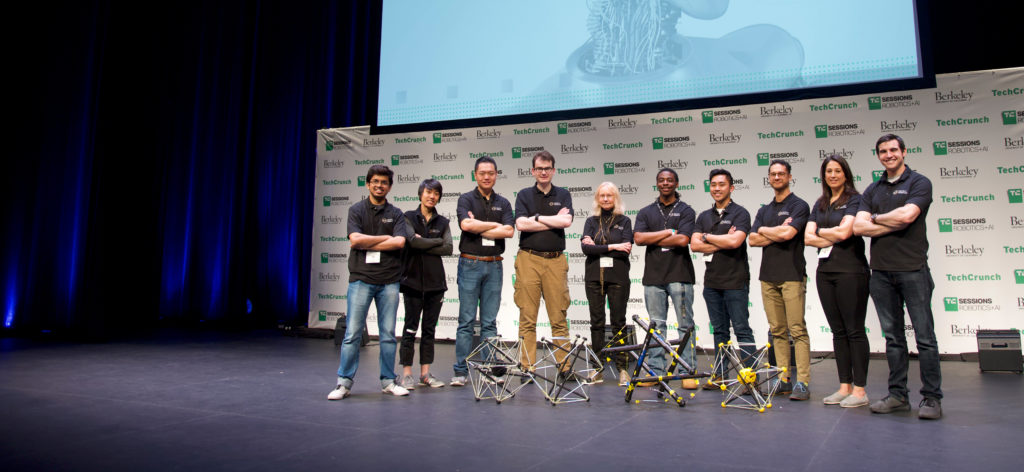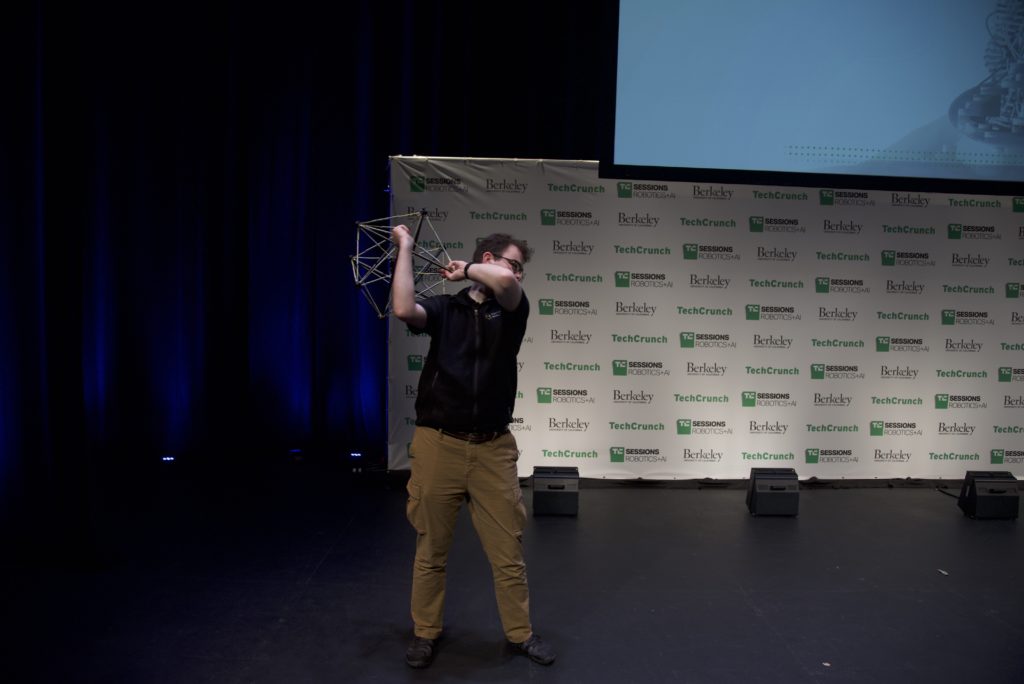

TechCrunch journalist Devin Coldeway published an article titled: How Squishy Robotics created a robot that can be safely dropped out of a helicopter that was released the day of the demo.
Excerpts:
The startup has been operating more or less in stealth mode, emerging publicly today onstage at our Robotics + AI Sessions event in Berkeley, Calif. It began, co-founder and CEO Alice Agogino told me, as a project connected to NASA Ames a few years back.
“The original idea was to have a robot that could be dropped from a spacecraft and survive the fall,” said Agogino. “But I could tell this tech had earthly applications.”
Her reason for thinking so was learning that first responders were losing their lives due to poor situational awareness in areas they were being deployed. It’s hard to tell without actually being right there that a toxic gas is lying close to the ground, or that there is a downed electrical line hidden under a fallen tree, and so on.
Squishy’s solution can’t quite be dropped from orbit, as the original plan was for exploring Saturn’s moon Titan, but they can fall from 600 feet, and likely much more than that, and function perfectly well afterwards. It’s all because of the unique “tensegrity structure,” which looks like a game of pick-up-sticks crossed with cat’s cradle.
See the full article at TechCrunch and video of TechCrunch presentation moderated by Caroline Winnett, Executive Director of Berkeley SkyDeck.
